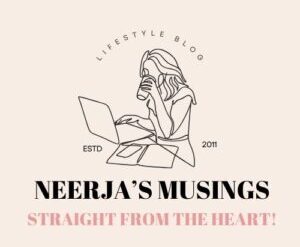Quinoa pronounced as kinuwa has recently been acknowledged as “superfood”.
Quinoa (Chenopodium quinoa) is a pseudocereal, as this grain isn’t from grasses like wheat and rice. Quinoa is the seed of Chenopodium quinoa and is closely related to bathua which is Chenopodium album (goosefoot).These gluten free seeds are rich in proteins, vitamin B, dietary minerals and fibers. It is also a good source of antioxidants called flavonoids.

A native of South American continent (Peru, Chile and Bolivia) for thousands of years, quinoa formed the staple diet of the Incas and their descendants. It dates back three to four thousand years ago when the Incas first realized that the quinoa seed was fit for human consumption. Quinoa “was the gold of the Incas” because the Incas believed it increased the stamina of their warriors.
The UN named 2013 ‘International Quinoa Year’ in recognition of its high nutrient content. With twice the protein content of rice or barley, quinoa is also a very good source of calcium, magnesium and manganese. It also contributes useful levels of several B vitamins, vitamin E and dietary fibre.
Another advantage of Quinoa is that,it is the least allergenic of all the ‘grains’, making it a fantastic wheat-free choice. Like buckwheat, quinoa has an excellent amino acid profile, as it contains all nine essential amino acids making it a complete-protein source. Quinoa is therefore an excellent choice for vegans.
Though quinoa is around for 1000 years or so, but it has recently attained a cult like status among foodies or health conscious people. Quinoa cultivation is one of the main livelihoods of Andean farmers, but now spreading to other parts of the world. In recent years, North America and Europe have taken up quinoa farming and India has recently joined in albeit on a smaller scale. Rajasthan, Andhra pradesh and Uttarakhand have taken the plunge, though not on a very large scale. I prefer to shop local varieties as they are fresher. I have procured my quinoa from very unlikely place – Beas, in Punjab.
When cooked, quinoa seeds become fluffy and creamy, but maintains slight crunchiness. It has a subtle nutty flavor and can be relished for breakfast (as a cereal), lunch (as a salad) or dinner (as a side dish). Since its bland in taste

I have added boiled quinoa in my salad and they perfectly gel with the taste. Lemon, salt and chat masala and lo, a tasty meal is ready in a jiffy!
Quinoa contains almost twice the fibre than most of the grains. More fibres means feeling full for a longer time, hence a favourite for weight loosers. Its suitable to give relief in constipation too. Fibre rich foods also lowers cholesterol and sugar levels, thus beneficial in heart disease and diabetes.
The iron in quinoa helps in healthy red blood cells and hemoglobin formation. It definitely is good for women, who are generally anemic. Iron carries oxygen to our whole body. The oxygen in blood helps in muscle contraction , brain function, regulation of blood temperature and energy metabolism.
High manganese, magnesium and B2 in quinoa improves tissue growth, alleviates blood vessels, detoxification, healthy bones and teeth and protects from injuries due to free radicals. So, overall a power packed performance from nutritional powerhouse !!
Besides adding it to salad, it can be used in the similar way, as we make milk – daliya by replacing daliya with boiled quinoa. It can be eaten in place of oats and can replace noodles in soups. Since quinoa is somewhat bitter in taste, it’s good to wash the boiled seeds under plenty of water before using in any of the dish.
I am sharing few recipe links below. They may help you in creating your own signature recipes. Quinoa is band in taste and hence will absorb the taste of spices of the dish.
https://www.bbcgoodfood.com/recipes/2364643/spicy-tuna-quinoa-salad
https://www.bbcgoodfood.com/recipes/one-pot-chicken-quinoa
Healthy cooking folks!!

Can it will get in India?
Yes. In super stores and big basket or Amazon too.Always opt for Indian produce.